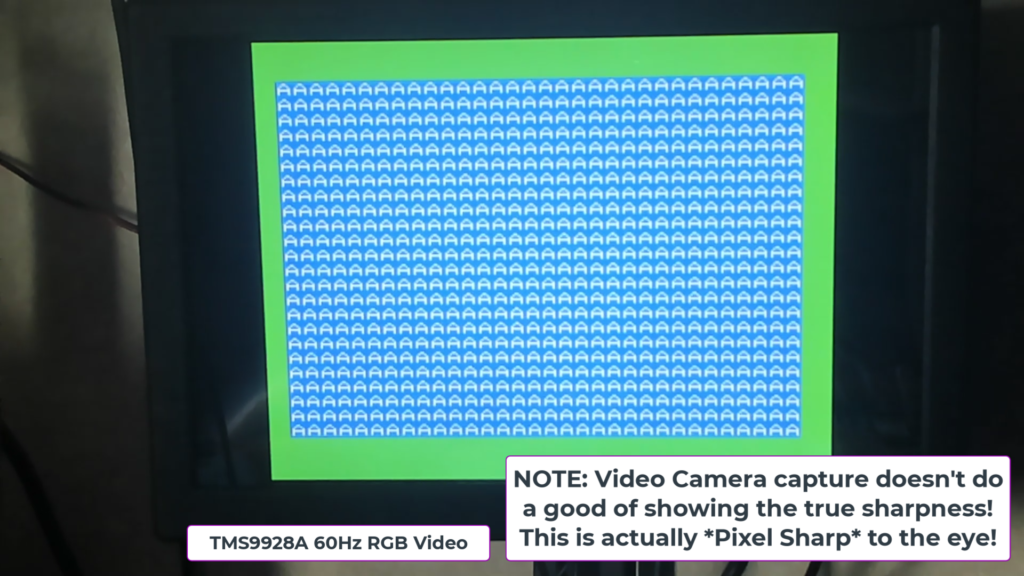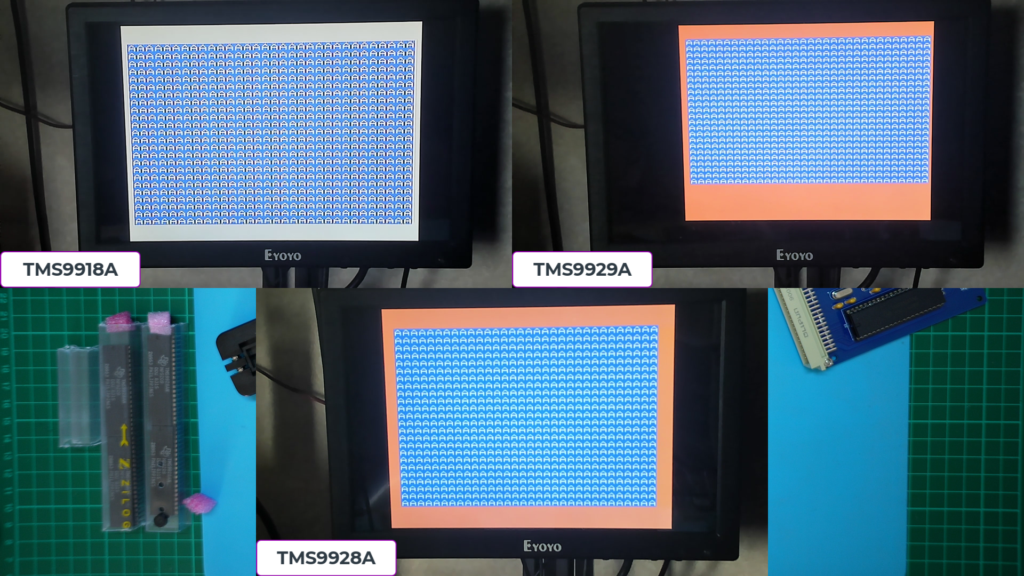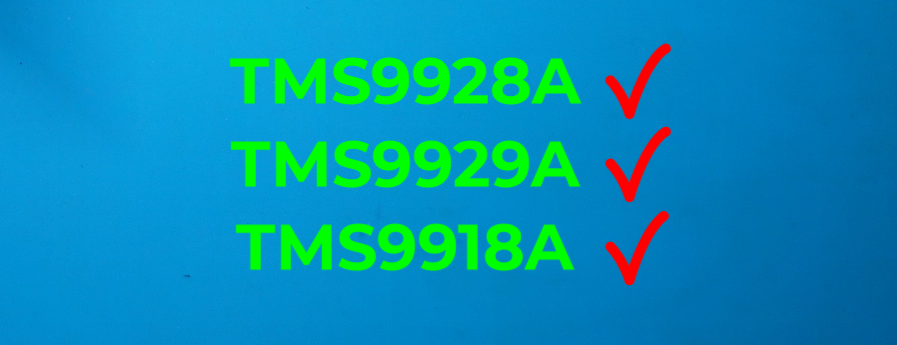In an earlier post / video, I updated the TMS VDP Display Card to v2.0, adding support for the TMS9918 60Hz Composite Video VDP chip, which was the most common variant used in NTSC TV standard countries.
Now, I’m really interested to see how the TMS9928A 60Hz RGB output performs.
Will it combine the nicely framed 60Hz video of the TMS9918A, with the RGB sharpness of the TMS9929A?
Join me as I try a TMS9928A 60Hz RGB output setup, and find out how well it performs.
After the v2.0 update I added an option for a tested TMS9918A VDP chip (with crystal), to my Tindie Store VDP Display Card listing.
This meant that I was now offering the options of ordering a VDP PCB with either a TMS9929A or a TMS9918A chip.
Of course, it took someone to ask, before I realised that I really should complete the available options, by also offering a TMS9928A chip. Therefore, also providing for those folk who would like a 60Hz RGBS output option.

Interestingly, the TMS9928A chips are rarer than the others, and therefore also more expensive to source.
No doubt this is due to the TMS9918A being the predominant chip that was used in the NTSC market, and (of course), the TMS9929A was the only variant available for the PAL market.
However, I was now keen to try a TMS9928A chip, as it also has the possibility of providing the optimal image quality of all the VDP chips.
Primarily because many modern monitors are often more optimised for 60Hz display, rather than 50Hz.
This was also evident on my previous video, where the TMS9918A 60Hz Composite Video output displayed nicely framed (by default), on my workbench video monitor.
This compared to the TMS9929A output, where at 50Hz, the image is offset and in a slightly wrong aspect ratio, even after some adjustment.
Of course, the TMS9929A, combined with the TMS-RGB module, certainly provides a much sharper display than the TMS9918A’s Composite Video output.
On this basis, I was really interested to see how the TMS9928A performs.
Will it combine the nicely framed 60Hz video of the TMS9918A, with the RGB sharpness of the TMS9929A?
I wanted to find out. So, I hunted down a couple of suppliers (three in the end), of the TMS9928A chip, and I placed a few orders.
Interestingly, the first order I placed didn’t ship for over a week. I then placed the other orders, which shipped promptly, and one of these later orders was the first to arrive.
So here are the first TMS9928A chips to arrive.

With the newly received TMS9928A chips now in hand, I took out my existing TMS9929A VDP chip, from my original TMS-RGB equipped VDP Display Card, and I then installed one of our newly received TMS9928A chips.
After plugging the VDP Card back into the backplane, and powering-up, I ran the same initial test program that I tested with in the earlier v2.0 update post / video.
And… the TMS9928A output looks really great!

As I suspected, my monitor is a lot happier with a 60Hz based signal, and I’m seeing a perfectly sharp RGB image, that’s also nicely framed.
Here are video monitor captures of the earlier demonstartion of my TMS9918A and TMS9929A outputs, for comparison.

Well, I’m really impressed! So, I think I’ll leave the TMS9928A chip in my VDP board for now.
Interestingly, it also means that software which utilises the VDP’s Frame Interrupt for timing, will also run a bit faster, as the code will be receiving 60 interrupts per second, instead of 50.
Okay, with some TMS9928A chips having arrived, operation now verified, and more chips on the way, I’ve now added the TMS9928A (plus Crystal), as an additional option on my Tindie Store listing.
This will mean, if you would like a tested TMS VDP chip with your VDP Card PCB, you now have the optional choice between all three TMS VDP variants.

I think I can now finally call my MECB TMS VDP Card offering complete!
